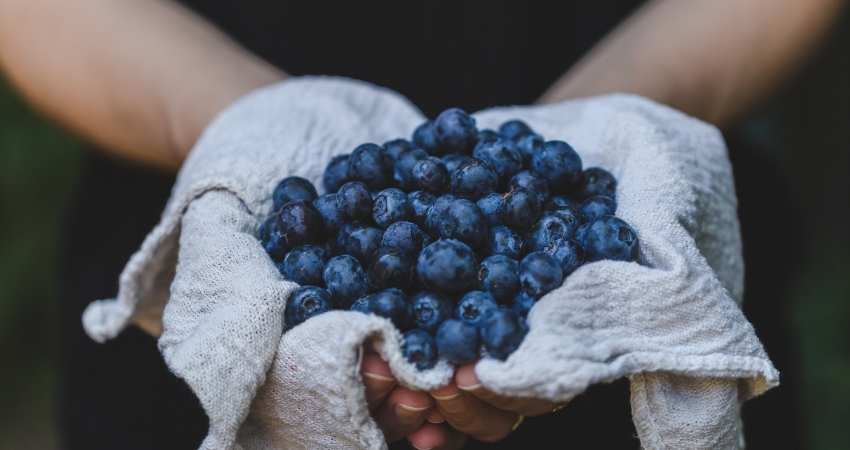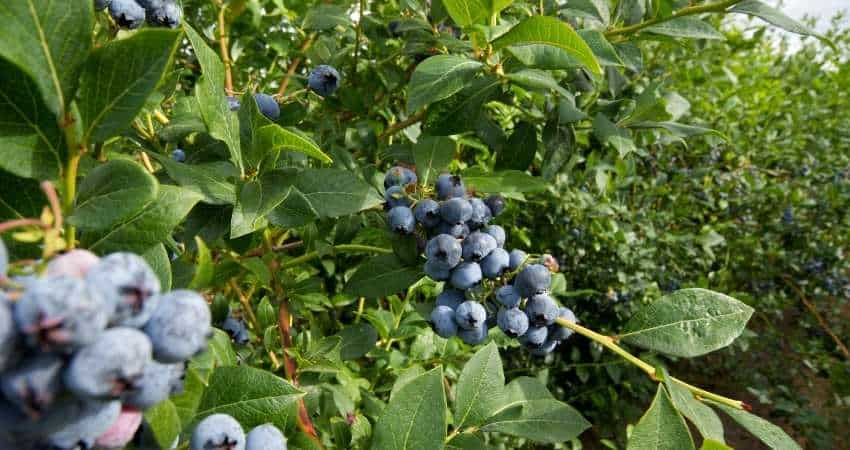How to Choose Good Blueberries: The Complete Guide
Whether you’re at the local nursery or the supermarket you’ll want to know, how to choose good blueberries?
To choose good blueberries in the store for direct consumption, look for non-wrinkled and decent-sized options that still has their bloom intact. When choosing blueberries for planting, pick the right varieties for your region and look for the signs of a healthy plant while at the grower’s nursery.
During my health coaching sessions, my clients often ask about choosing the best blueberries. Also, I purchase and consume blueberries every day. Therefore, I have researched this topic in the past and present.
The rest of the article will look at how to choose blueberries for consumption and for planting in more detail.
How to Choose Blueberries at the Store
To choose blueberries at the store, there are four major things you should watch out for. They are covered below.

The Color
Blueberries should be blue-black or deep purple-blue. A reddish or pinkish color is a sign that the blueberries aren’t ripe yet. You can ignore the pink color only if you are buying pink lemonade blueberries1.
The Bloom
The bloom is the whitish color you’ll find on fresh blueberries. It is a completely natural protection for the berries, making them more resistant to insect attack or bacteria infestation2.
Choosing berries with the bloom still intact is one of the best ways to be sure they are fresh. The bloom will fade away with time and can be wiped off with a constant touch. So berries with the bloom still intact show that they haven’t been handled a lot while at the store.
The Smoothness
Blueberries that are shriveled, wrinkled, or just soft and bruised are already old3. To know if the blueberries have been bruised, check for some juice stains in the container.
Old and bruised blueberries aren’t necessarily useless. They can still be useful if you intend to make smoothies and the store is offering a discount on them. If not, check another aisle or store.
The Size
Although there’s no scientific backing for how the size of blueberries may affect the quality, the smallest berries tend to be tastier compared to the biggest ones.
If you find a selection of berries with packs containing smaller and bigger ones separately, choosing the smaller ones is often a good idea.

How to Choose Blueberries for Growing
If you want to start your own farm to grow the blueberries you consume and design your landscape or in preparations for going full-scale commercial in the future. Here are a few things you should do.
Choose the Right Variety
When choosing blueberries to grow, the first thing you should do is to decide on the varieties you want. There are many cultivated varieties (cultivars) in the market today, each of them varying in size of the berries and the time of bloom.
A good tip is to choose two to three cultivars to ensure cross-pollination. This won’t be necessary if you choose to go with varieties that are tagged “self-fruitful” or “self-fertile.” However, it’s harder to find growers with such varieties.
When choosing different varieties to encourage cross-pollination, don’t forget to stay within the main group. Highbush blueberries will not pollinate a lowbush type. You should also ensure that their time of bloom is the same.
Some of the factors that should guide your decision to choose a variety include fruit size, taste, and color. If you intend to sell some of your harvests later, you should consider varieties that are smaller and firmer as they tend to have more flavors for baking or processing. They’ll also withstand the rigors of storage better.
If the aesthetic side of things appeals to you, you should consider the plant colors and bush size in your decision-making process. Some blueberry varieties will take on a beautiful yellow, purple, red, or orange color in the fall and anywhere from white to pink during the spring.
Finally, you should choose varieties that are bred for resistance to diseases that are common in your area.
The best commercial growers will include this information on the label and only sell certified disease-free plants. It’s also a good idea to choose local growers to make dispute resolutions easy if they arise.

Pay Attention to Leaf and Fruit Buds
If you visited the commercial grower in the spring, you should look at the fruit and leaf buds on the berry plants you intend to choose. You’ll find lots of buds in a healthy plant, while unhealthy ones will have few buds.
Touch some of the buds gently to check for signs of water stress. If the buds don’t brush off when touched, they are healthy.
Watch for Leaf Discoloration and Spots
Black spots on the leaves of a plant signify plant disease. You should also avoid choosing the blueberry plant if you find yellow or orange veins running through the leaves, and winter isn’t near.
Such discolorations on the leaves of blueberry plants are normal when the plant is about to go dormant for the winter—it cuts off nutrients to the leaves at this point, causing them to die off.
Check the Height of the Plant
A healthy two-year-old blueberry plant will typically be 24 to 30 in (60.96 to 76.2 cm) tall, while three-year-old plants will measure 36 to 48 in (91.44 to 121.92 cm). Any plants around this age bracket that is shorter than this height range is most likely unhealthy.
Choosing plants that are younger than 2-3 years is not advised as plants within this age have a higher chance of survival when transplanted to another location.
Inspect the Roots
Examine the roots to see if there are any unhealthy growths or if they look underdeveloped. If you’re buying nursery plants, it’s easy to examine them as they are packaged bare-root4.
Growers that sell directly from the garden typically have a process that allows customers to check the roots on the plant. If the roots look weak in any way, don’t buy the plants for growing.
Tips for Picking and Storing Your Blueberries
As you’ve seen above, ripe blueberries are plump and have a deep blue or purple color. They’ll also have the gray or whitish bloom. If the blueberry is firm and shows a hint of red, white, or green, it isn’t fully ripened yet.
Don’t pick them as soon as they turn blue, wait a few days until they practically fall off into your hand5.
- Sort the blueberries after picking them to remove the moldy ones. This will prevent one of them from spoiling the entire bunch.
- If you store your picked blueberries in closed bags or containers, make sure they aren’t under the sun or under direct heat. Blueberries are generally fragile. Exposing them to such heat will significantly shorten how long they can be stored before being frozen or cooked. This is why the containers used to store blueberries in stores have holes in them and are kept away from heat.
- Don’t wash the blueberries you’ve picked from your farm until you are ready to eat, cook, or freeze them. If you want to freeze them, you’ll want to check my blog post first, How to Freeze Blueberries.
- Washing blueberries too early will make them soften quickly. You should also refrigerate your blueberries as soon as you can. Freshly-picked blueberries can stay a couple of weeks when refrigerated properly. However, the berries will begin to lose their flavor and texture after a week.
If you have any questions to ask me about this article don’t hesitate to comment below or email us. You can find an email on our contact page.
Read Next
Do Organic Blueberries Have Worms?
Can You Store Blueberries and Strawberries Together?
Strawberries vs Blueberries: Which is Better? A Comparison
The 6 Best Vegetables To Go With Blueberries
Can You Store Blueberries in Tupperware?
Can You Store Blueberries and Strawberries Together?
- USDA: Pink Lemonade A Pink-Fruited Blueberry Selection [↩]
- Consumer Reports: Q&A: Is the the cloudy coating on blueberries safe to eat? [↩]
- U.S. Highbush Blueberry Council: Buying Blueberries [↩]
- SFGATE: How to Pick a Good Blueberry Plant [↩]
- The Old Farmer’s Almanac: Growing Blueberries [↩]
